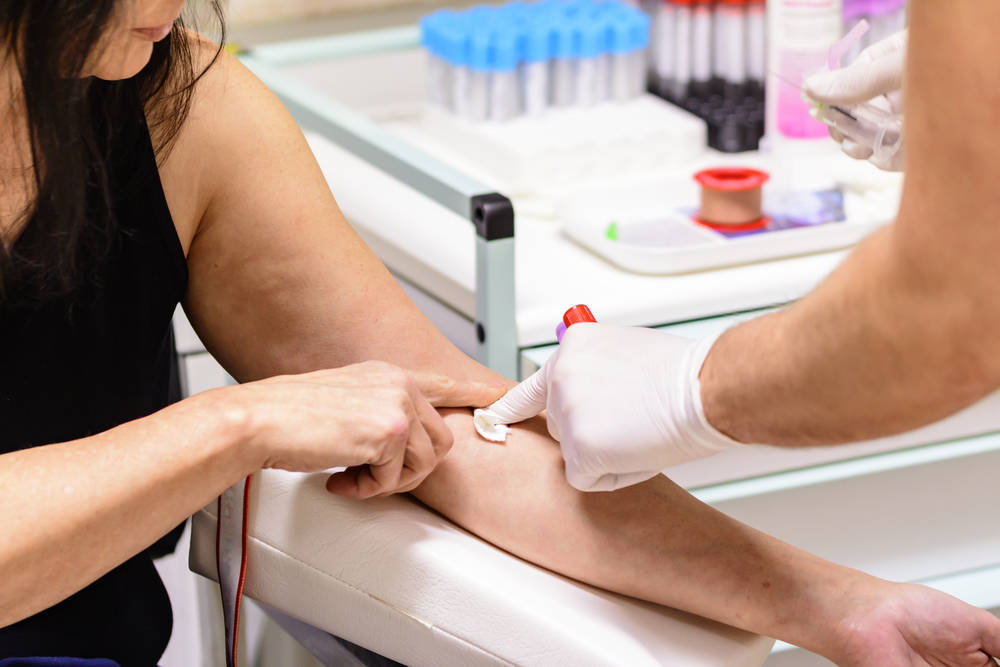HbA1C blood test: HbA1C is a measurement of the haemoglobin A1C level in a person’s blood. A droplet of blood can be used to determine the HbA1c level in children. When blood glucose levels rise, haemoglobin, the oxygen-carrying protein found in red blood cells, bonds with glucose in the bloodstream. A higher HbA1c level indicates higher glucose levels, and the test will show this.
Haemoglobin S trait
Haemoglobin S trait blood tests are available for both adults and children. The solubility test detects haemoglobin S and helps distinguish it from the other forms of haemoglobin. However, the test cannot differentiate sickle cell anaemia from other forms of sickle cell disease. Often, the results of the solubility test are negative if the individual has low levels of Hb S.
Haemoglobin variants
Haemoglobin variants have variable effects on HbA1c blood levels. There are now 1,198 different types of haemoglobin in humans. While most are clinically insignificant, some are significant enough to be of significance. Point mutations occur when a haemoglobin molecule gains or loses one of its amino acids. Combinations of these haemoglobins also colour the clinical picture. For example, HbS is a haemoglobin variant with normal chains and abnormal b polypeptide chains due to a substitution of valine for glutamic acid in position six of the b chain.
Seasonal variations
Seasonal variations in HbA1c levels may be attributed to changes in air temperature, hormones, and food intake. Seasonal variations are particularly noticeable among patients living in regions with large temperature differences. For example, in Koshigaya City, Japan, HbA1c levels are consistently higher in summer and lower in winter. Similarly, HbA1c values are lower in the city in December than in January.
Genetic makeup
The high-powered genetic analyses now available provide a new opportunity for dissecting the genetic makeup of HbA1C levels. This information can inform recent initiatives aimed at focusing diabetes care and diagnosis more centrally on HbA1c levels. Such studies will be of considerable interest in the years to come. Let us look at some of the possible implications of these studies. In particular, we will examine the genetic makeup of HbA1c blood test results in more detail.
Anaemia
If you suspect that you may have diabetes, your doctor may run an HbA1c blood test to identify the condition. However, this test is not a reliable indicator of your long-term glycemic status. The reportable range is 3.3 to 18.8%. Nonetheless, if you have elevated HbA1c levels, it’s a good idea to seek other diagnostic methods.
Excess breakdown of red blood cells
Haemoglobin is a protein found in the red blood cells (RBCs) and is responsible for giving them their bright red colour. RBCs usually live three months, and the A1c blood test reflects the number of these cells in your blood at the time of testing. Haemoglobin levels are useful because they represent an average of blood sugar control over some time.
Pregnancy
Although no studies are comparing HbA1c blood levels during pregnancy to those of non-pregnant women, some have shown that a lower level of this blood marker is linked to lower birth weight. One study, by Worth et al., showed a substantial increase in HbA1c levels during pregnancy, but a smaller decrease during the first trimester. The authors also found a relationship between a woman’s HbA1c level during pregnancy and the percentile she gave birth to. Another study, by Hiramatsu et al., found a similar correlation between the HbA1c level during pregnancy and the percentile of the baby’s birth weight.
Haemoglobin S trait affects test results
Haemoglobin S trait refers to a genetic disorder that affects blood cells. The trait causes a person’s blood to be sickle-shaped. It is inherited from both parents. When haemoglobin S is low, the body’s cells don’t get the oxygen they need to survive. The trait may be present in small amounts or high amounts, and it is not always obvious until a person has been sick for many years.
Other factors that can affect test results
HbA1c blood test results can be falsely low in some individuals. These false-negative results can be caused by several factors, including genetic disorders, chronic kidney disease, and alcohol use. Alcohol consumption can also reduce HbA1c levels since it interferes with the binding of glucose to haemoglobin. Likewise, chronic liver disease and the second trimester of pregnancy can affect the HbA1c results.
Know more about hba1c blood test products in Welzo.com
Read More: How to Check For PCOS in Blood Test
